Nuclear submarines with ballistic missiles (SSBN) type "Ohio"
10 April 1976 of the shipyard of Electric Boat began the construction of a new nuclear strategic submarine for the US fleet - SSBN 726 OHIO, which became the head in a large series of similar SSBNs that were developed in accordance with the Trident program. Experimental design and research work on the new strategic rocket carrier project was carried out in America from October 26 1972 of the year, and the order to build the head boat of the series was issued on July 25 of the year 1974. Currently, all 18 boats built on this project remain in the US Navy. The 17 boats were named after the US states, and one boat, SSBN-730 Henry M. Jackson, was named after Senator Henry Jackson.
Especially for the basing of new submarines in the United States conducted a modernization of two bases. One on the Pacific coast is Bangor, today it is the Kitsap naval base (formed in 2004 by merging the submarine base Bangor and the naval base Bremerton) in Washington State, the second on the Atlantic coast is the naval base Kings Bay in Georgia. Each of these two bases is designed to service the 10 SSBNs. The necessary equipment was installed at the bases for receiving and unloading ammunition from the boats, for the current repair and maintenance of submarines. All conditions have been created to ensure the rest of the personnel. Training centers for staff training were built at each base. They could train up to 25 thousands of people every year. The special simulators installed in the centers allowed the submarine control processes to be worked out in a variety of conditions, including torpedo and rocket firing.
Atomic submarines of the Ohio type belong to third generation boats. As part of the work on the creation of third-generation submarines in the United States, they were able to achieve maximum unification of their submarine forces, reducing the number of submarine classes to two: strategic submarines and multi-purpose submarines (one boat project in each class). The Ohio-type strategic missile-carriers possessed a single-hull structure traditional for American nuclear submarines, differing from multi-purpose submarines by a rather well-developed superstructure. When creating boats of this generation, close attention was paid to reducing the noise level of submarines and improving their electronic equipment, especially sonar weapons. A feature of the third-generation submarine reactors was that their life could be increased 2 times as compared to the reactors of the boats of the previous generation. Reactors installed on new boats could continuously operate at full power for 9-11 years (with strategists) or 13 years (with multi-purpose submarines). Previous reactors could not operate for more than 6-7 years. And considering the real operating modes, which were much more benign, third-generation submarines could serve without recharging the reactor core for up to 30 years, and in the case of a single recharge - 42-44 of the year.
To estimate the size of Ohio-class strategic missile carriers, it suffices to say that their hull length is 170 meters, it is practically 1,5 football fields. Moreover, these boats are considered one of the most silent in the world. However, they were made unique not by the dimensions and noiselessness, but by the composition of the nuclear weapons - 24 ballistic missiles. Until now, no submarine in the world can boast the presence of such an impressive arsenal (the Russian fourth-generation submarines of the Borey 955 project carry the Bulava P-16 ballistic missiles onboard the 30).
The first Ohio-type 8 submarines were armed with the Trident I C4 ballistic missiles, the subsequent boats received the Trident II D5 missiles. Later, in the course of the planned overhaul of the 4 submarines, the boats of the first series were re-equipped on the Trident II D5 ICBMs, and the 4 boats were also converted into carriers of Tomahawk cruise missiles.
The power plant data SSBN was built on the basis of the eighth generation reactor S8G. In normal operation, two turbines with a capacity of 30 000 l. with. through the gearbox rotated the shaft with the propeller, providing the submarine submersible speed - 20-25 nodes. However, the highlight of the boats of this type was a low-noise mode of operation, when the circulation pumps of the primary circuit of the reactor stopped and it switched to natural circulation. Turbines and gearbox are stopped and separated from the shaft by means of a special coupling. After that, only two turbogenerators with an 4000 kW power each remained, the electric power generated by them, passing through a rectifier converter, was fed to a propeller motor that rotated the shaft. In this mode, the boat has developed a speed sufficient for silent patrols. The same scheme of construction of the power plant is used on the fourth-generation submarines.
Description of the design of the boat type "Ohio"
Ohio-type boats have a mixed-structure hull: the submarine's robust hull has a cylindrical shape with a truncated cone-shaped extremity, it is complemented by streamlined extremities, in which the HAC spherical antenna, ballast tanks and propeller shaft are located. The upper part of the durable hull of the boat was covered with a lightweight, permeable, streamlined superstructure that covers the missile shafts, as well as various auxiliary equipment at the stern and the flexible towed GAS antenna located at the aft end. Due to the relatively small area of the light hull, the submarine is considered single-hull. According to American experts, such a design of SSBNs creates less hydrodynamic noise and allows to achieve the highest possible speed of a low-noise course in comparison with two-hull submarines. The hull of the boat is divided into compartments by flat bulkheads, each compartment is divided into several decks. Loading hatches were provided in the nose, missile and stern compartments. The cabin of the boat is shifted to the bow, horizontal wings of the wing-shaped form are installed on it, in the rear part of the boat are cruciform, vertical face plates are mounted on horizontal rudders.
The solid hull of the submarine was welded from sections (shells) of conical, cylindrical and elliptical shape with a thickness of 75 mm. The material used was high-strength steel HY-80 / 100, having a yield strength of 56-84 kgf / mm. To increase the strength of the hull on the boat was provided for the installation of ring frames, which are spaced along the entire length of the hull. Also, the boat hull received a special anti-corrosion coating.
The basis of the power plant of the boat is a nuclear reactor - a double-circuit pressurized water reactor (PWR) of the S8G type, which was designed by engineers of General Electric. It consists of a standard set of parts for reactors of this type: reactor vessel, active zone, neutron reflector, control and protection rods. The steam-turbine power plant includes two turbines with an 30 power. 000 hp. each gearbox, condenser, circulation pump and steam lines. Both steam turbine units operate on one shaft, while the high speed of rotation of the turbines is reduced to 100 revolutions per minute with the help of a reducer, after which the coupling is transmitted to the propeller shaft, which causes the seven-blade propeller with a diameter of 8 to rotate. Propeller has oblique sickle-shaped blades with reduced rotational speed, which allows to reduce the noise on the speed of patrol. Also on board there are two low-speed multi-pole turbo-generators, each with 4 mW power, they generate electricity with voltage 450В and frequency 60 Hz, which, using an AC-to-DC converter, provides power to the propeller motor (in this mode, steam turbine units do not rotate the propeller).
The main armament of the Ohio-type SSBNs are intercontinental ballistic missiles located in 24 vertical shafts, which are located in two longitudinal rows immediately behind the fence of retractable devices. The ICBM mine is a steel cylinder, which is rigidly fixed in the submarine hull. In order to be able to install the Trident II missiles on board, the missile shaft was initially increased compared to the boats of the previous project, its length is 14,8 meters, diameter is 2,4 meters. On top of the shaft is closed with a lid, equipped with a hydraulic drive, it provides the sealing of the shaft and is designed for the same pressure level as the durable submarine hull. On the lid are 4 control and commissioning hatches, which are designed to conduct scheduled inspections. A special locking mechanism is designed to protect against unauthorized access, and manages the opening of the technological hatches and the cover itself.
The Trident ICBM can be launched at 15-20 seconds intervals from the depth of the dive to 30 meters, at a speed of the boat approximately 5 nodes and waves of the sea to 6 points. All 24 missiles can be fired in one salvo, while test launches of the entire ammunition load of the boat per salvo in the US have never been carried out. In the water, there is an uncontrolled movement of the rocket, after its release to the surface, according to the acceleration sensor, the first-stage engine is activated. In normal mode, the engine is turned on at a height of about 10-30 meters above the sea surface.
Trident II D-5 missiles can be equipped with two types of warheads - W88 with a capacity of 475 kt each and W76 with a capacity of 100 kt each. At maximum load, one missile can carry 8 combat units W88 or 14 combat units W76, providing the maximum range of flight - 7360 km. The use of special astrocorrection equipment on rockets together with an increase in the efficiency of the navigation system made it possible to achieve a circular probable deviation for W88 units - 90-120 meters. With the defeat of enemy missile mines, the so-called “2 on 1” method can be used, when two combat units with different missiles are simultaneously aimed at one ICBM mine. In this case, when using W88 units with a power of 475 кт, the probability of hitting the target is 0,95. When using W76 blocks, the probability of hitting a target with the same “2 over 1” method is already 0,84. In order to achieve the maximum range of the flight of ballistic missiles, 8 warheads W76 or 6 warheads W88 are usually installed on their board.
For self-defense, each boat was equipped with 4 TA caliber 533 mm. These torpedo tubes are located in the bow of the submarine slightly at an angle to the median plane. In the ammunition of the boat included 10 torpedoes Mk-48, which can be used against surface ships and submarines of a potential enemy.
As part of the modernization of the submarine program A-RCI (Acoustic Rapid COTS Insertion), all SAC boats of the Ohio type have been upgraded to the AN / BQQ-10 version. Instead of 4-x GAS a common station of the COTS type (commercial-off-the-shelf) was used, which has an open architecture. This solution allows in the future to facilitate the upgrade process of the entire system. The first to upgrade was the Alaska submarine in the autumn of 2000. The new system, among other things, got the opportunity to carry out “hydroacoustic mapping” (Precision Underwater Mapping and Navigation). This allows SSBNs to create a high-resolution hydrographic map and share it with other vessels. The resolution of the equipment installed on board allows you to distinguish even small objects such as mines.
A special station AN / WLR-10 is used to alert the crew about acoustic exposure. Together with it, while the boat is on the surface, the radar warning station AN / WLR-8 (V) 5, operating in the 0,5-18 GHz band, is used. Also, the submarine received 8 launchers Mk2, intended for the production of acoustic noise and the station hydroacoustic counter AN / WLY-1. The main purpose of this station is the automatic detection, classification and subsequent tracking of the attacking torpedoes and a signal for the use of hydroacoustic countermeasures.
During the 2002-2008, the first Ohio-type 4 boats (SSGN 726 Ohio, SSGN 727 Michigan, SSGN 728 Florida, SSGN 729 Georgia) armed with Trident I ICBMs were re-equipped into the PLARC. As a result of the modernization, each of the boats could carry Tomahawk cruise missiles on board up to 154. At the same time 22 from 24 existing mines were upgraded for vertical launch of cruise missiles. Each such mine can be placed on 7 KR "Tomahawk". At the same time, the two mines closest to the wheelhouse were equipped with airlock chambers. These cameras can dock mini-submarines ASDS or DDS modules, designed to exit combat swimmers at a time when the submarine is in a submerged position. These funds can be installed on the boat both together and separately, with a total of no more than two. At the same time, due to their installation, mines with cruise missiles are partially blocked. For example, each ASDS blocks three mines at once, and a shorter DDS module - two. As part of a unit for special operations (seals or marines), the boat can additionally transport up to 66 people, and in the case of a short-term operation, the number of paratroopers on board the boat can be brought to 102 people.
At present, the Ohio-type SSBNs continue to hold the palm in terms of the number of 24 missile silos placed on board and are still considered among the most advanced in their class. According to experts, among the constructed strategic missile carriers, the level of noise in this boat can only be rivaled by French Triumphan type boats. The high accuracy of the Trident II ICBM allows you to hit not only land-based ICBMs, but also the entire range of high-strength targets such as depth-mounted gearboxes and silo launchers, and the large launch range (11 300 km) allows the SSBN Ohio type to carry out combat duty in the Atlantic and Quiet the ocean in the zone of domination of its own naval forces, which provides the boats with a sufficiently high combat stability. The combination of the low cost of maintenance and high efficiency of these submarines armed with Trident II ICBMs has led to the fact that naval strategic forces currently occupy leading positions in the US nuclear triad. The decommissioning of the last Ohio-type boat is scheduled for 2040 year.
Performance characteristics of the Ohio-type SSBNs:
Overall dimensions: length - 170,7 m, width - 12,8 m, draft - 11,1 m.
Displacement - 16 746 t (underwater), 18 750 t (surface).
Submerged speed - 25 nodes.
Surface speed - 17 nodes.
Immersion depth - 365 m (working), 550 m (maximum).
Power plant: nuclear, water and water reactor type GE PWR S8G, two turbines 30 000 hp, two turbo generators 4 mW, diesel generator power 1,4 mW.
Missile armament: 24 ICBM Trident II D-5.
Torpedo armament: 4 TA caliber 533 mm, 10 torpedoes Mk-48.
Crew - 155 man (140 sailors and 15 officers).
Base "Kings Bay" for servicing the SSBNs of the Ohio shooting range assigned to the Atlantic Fleet of the US Navy
Information sources:
http://armyman.info/flot/podvodnye-lodki/18956-podvodnye-lodki-tipa-ogayo.html
http://bastion-karpenko.ru/ohio-ssbn-726
http://korabley.net/news/atomnye_podvodnye_lodki_sravnenie_dvukh_proektov/2012-04-16-1167
https://xpda.com/kingsbay (фото)
Based on materials from open sources.
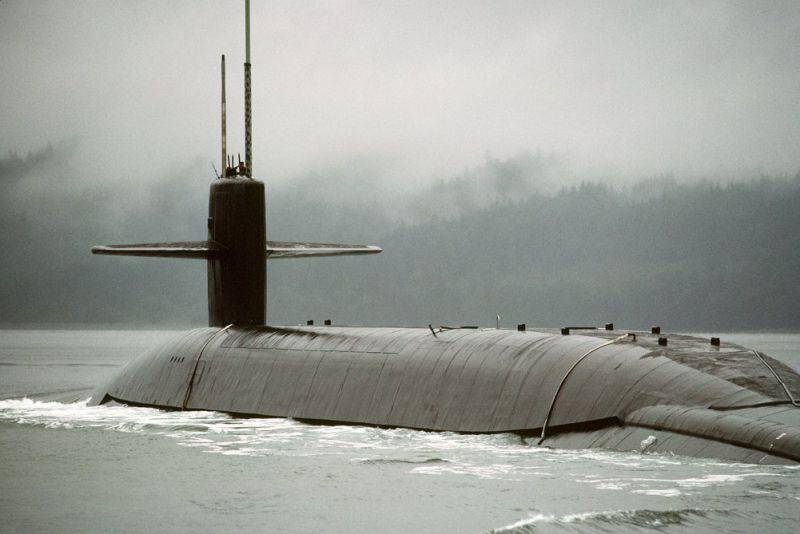
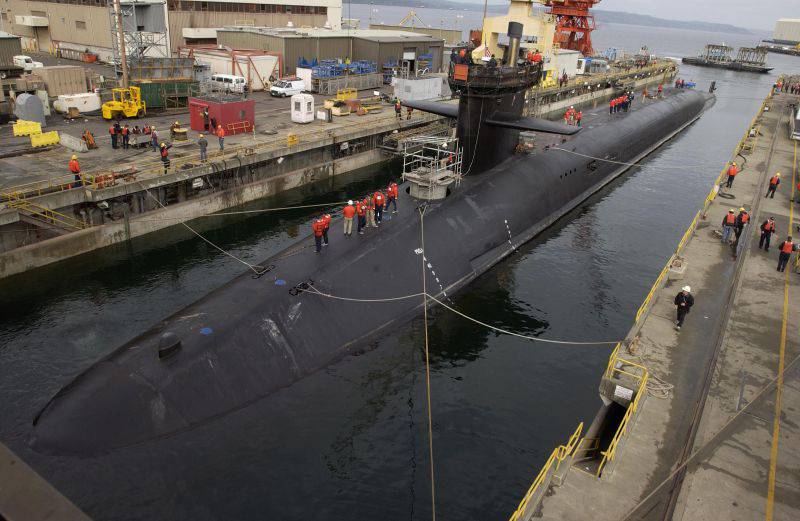
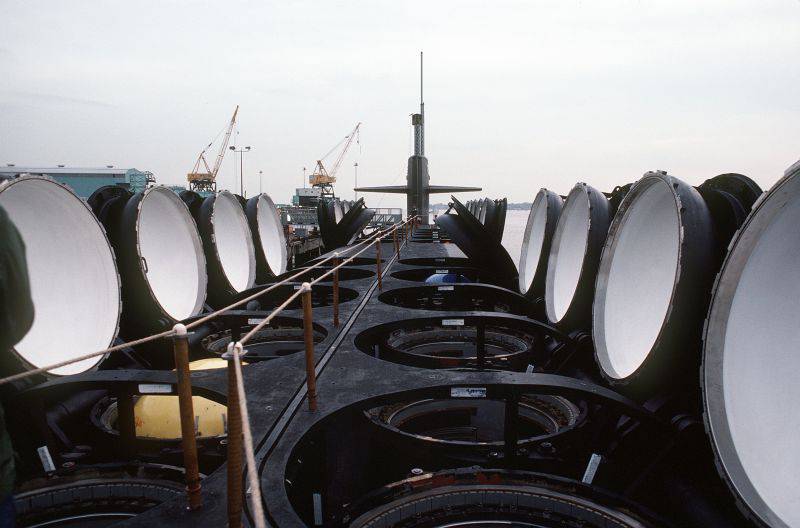
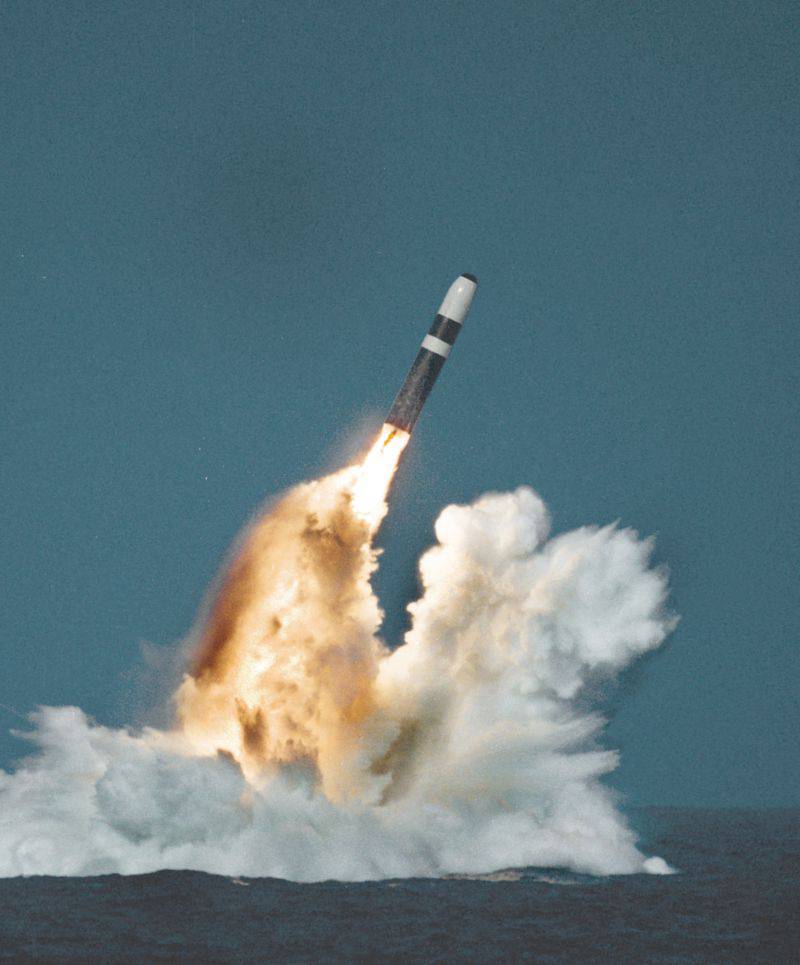
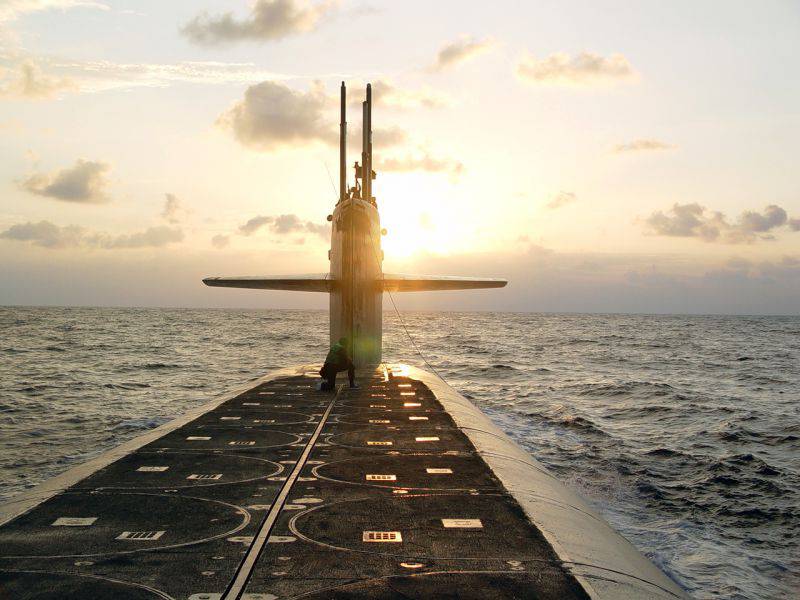
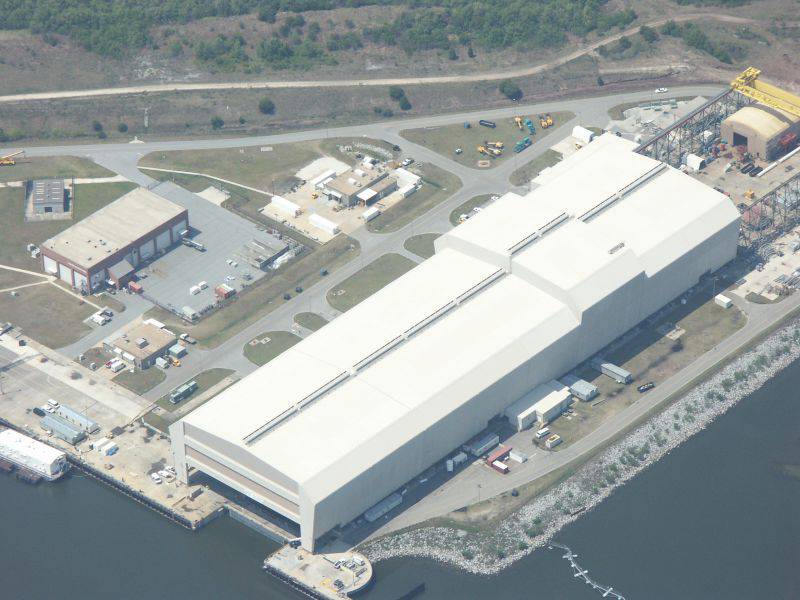
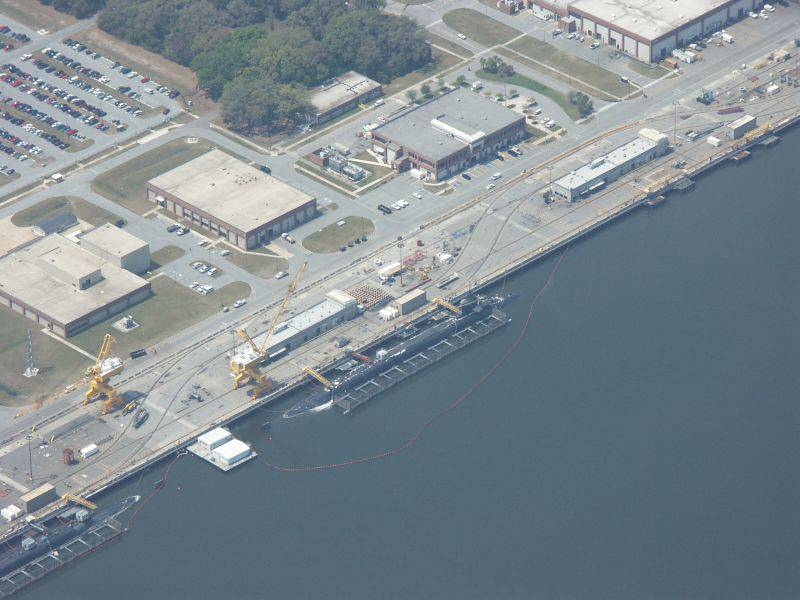
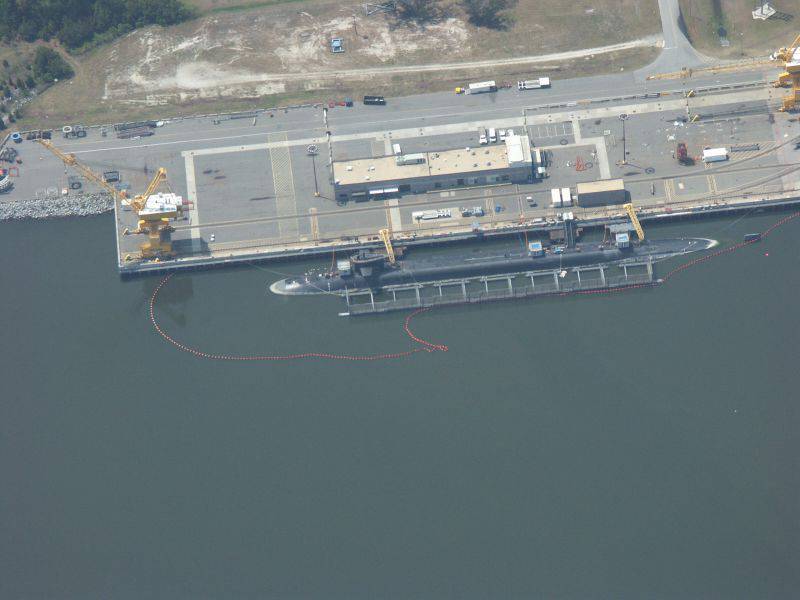
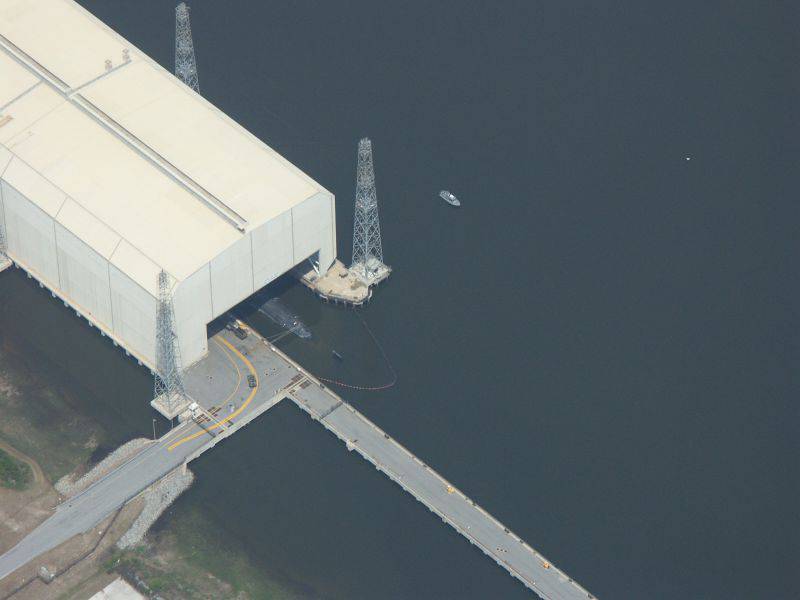
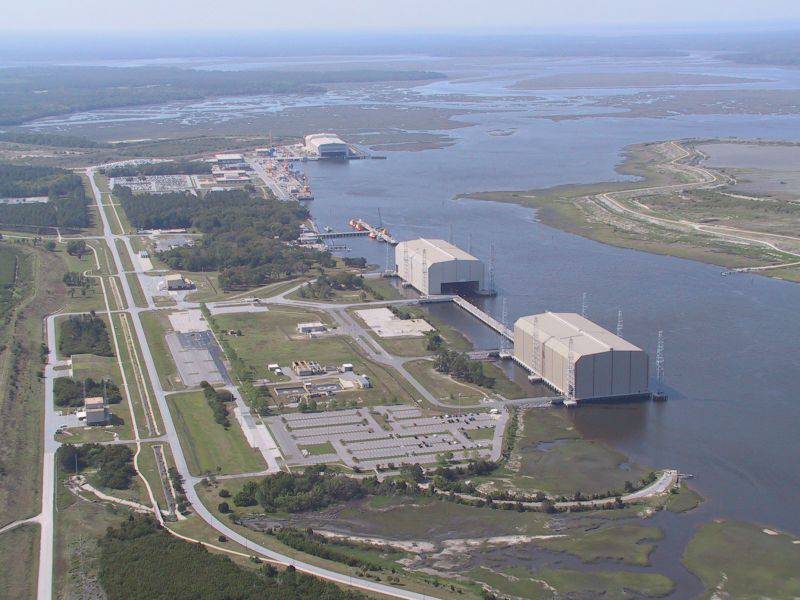

Information